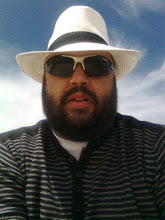 My judgement is of course by nature subjective, but for this post and the next I’d like to take a closer look at several musical concoctions that left this listener with a feeling of satisfaction, rather than a reflective ‘what were they thinking?’.
My judgement is of course by nature subjective, but for this post and the next I’d like to take a closer look at several musical concoctions that left this listener with a feeling of satisfaction, rather than a reflective ‘what were they thinking?’.The 1980s produced more than its fair share of rock supergroups, again with varying levels of success. The following talent pools managed to rise nearer the top of the charts than most, and featured a common link which was rather ‘chic’.
The Honeydrippers boasted a rock music roster whose collective edge seemed at odds with their group name. The genesis of the 1984 Honeydrippers’ EP project originated from a few years previous. Following the death of Led Zeppelin drummer John Bonham in 1980, ex-lead singer Robert Plant took his first tentative steps back into music through jamming with a group of local R&B musicians called the Honeydrippers during 1981. Plant saw it as a way of connecting with his pre-Led Zeppelin love of traditional American roots rhythm and blues. The Honeydrippers referred to the nickname of blues pianist Roosevelt Sykes. In addition to vocalist Plant, the line-up for the band during that period comprised guitarists Robbie Blunt and Andy Sylvester, bassist Jim Hickman, drummer Kevin O’Neil and saxophonist/harmonica player Ricky Cool.
Plant and Blunt then began writing some new material, which Plant deemed more suited to what he envisaged as a new solo project. Plant put his involvement with the Honeydrippers to one side, and recorded his debut solo albums ‘Pictures At 11’ (1982), followed by ‘The Principle Of Moments’ (1983). Though both albums were very successful, Robert Plant decided to revive the Honeydrippers project in 1984. This time around he called in some big names that would quickly define the Honeydrippers as a bona fide supergroup. The studio based outfit soon featured contributions from Plant’s old Led Zeppelin
 sidekick Jimmy Page on guitar, who was joined by one of his old band mates from the Yardbirds Jeff Beck (ex-Jeff Beck Group), also on guitar, along with one time Chic guitarist Nile Rodgers (see previous Chic post). Also added to the playing roster were drummer Dave Weckl, bassist Wayne Pedziwiatr, and pianist Paul Shaffer (he of future Letterman sidekick fame).
sidekick Jimmy Page on guitar, who was joined by one of his old band mates from the Yardbirds Jeff Beck (ex-Jeff Beck Group), also on guitar, along with one time Chic guitarist Nile Rodgers (see previous Chic post). Also added to the playing roster were drummer Dave Weckl, bassist Wayne Pedziwiatr, and pianist Paul Shaffer (he of future Letterman sidekick fame).The group recorded a five track EP, titled appropriately enough ‘The Honeydrippers, Vol. 1’. The EP’s production team was listed as Nugetre and The Fabulous Brill Brothers. ‘The Honeydrippers, Vol. 1’ was released on the Es Paranza Records label through Atlantic, and reached #5 in the U.S., #13 in Australia and #56 in the U.K., following its December ‘84 release. All five tracks were covers of classic 50s and 60s R&B numbers. The first single released was a cover of the 1959 US#2 hit for Phil Phillips with The Twilights’. ‘Sea Of Love’ was a lush string drenched ballad, that was almost as syrupy sweet as the Honeydrippers name implied. The Honeydrippers’ version performed almost as well on the U.S. charts as the original, peaking at #3 in late ‘84. It also reached #5 in Australia in early ‘85 and #56 on the British charts. The follow up single ‘Rockin’ At Midnight’ (US#25) was originally a #2 R&B hit for Roy Brown in 1949.
The Honeydrippers made a memorable appearance on ‘Saturday Night Live’ and did tour, with Stray Cats (and future B.S.O. leader) Brian Setzer added to the line-up on guitar. There were tentative plans to record a full album, though these never came to fruition. Following the 1985 tour the Honeydrippers stellar cast returned to their respective individual career paths. A ‘volume two’ for the Honeydrippers has never surfaced.
The Power Station came about as a side project for Duran Duran members Andy Taylor (guitar) and John Taylor (bass), whilst the new romantic glamour boys were on extended sabbatical from the relentlessly hectic world of the band. Meanwhile the other three ‘Duran Duranites’, Simon Le Bon, Nick Rhodes and Roger Taylor formed their own side-project called Arcadia (‘Election Day’).
Actually the Power Station project happened purely by chance. John Taylor had been dating a model by the name of Bebe Buell and he offered to assemble a funked up version of the old T. Rex
 rocker ‘Bang A Gong (Get It On)’ (1971/2 US#10/OZ#14/UK#1) for Buell to contribute vocals on. John Taylor had asked his Duran Duran band mate Andy Taylor to play guitar on the track, and invited former Chic drummer Tony Thompson to contribute as well. In late 1984 the trio had laid down several demo tracks in the studio, including a few original numbers, before as fate would have it, J. Taylor and Buell went their separate ways. Feeling that the chemistry was too good to waste, the trio decided to press on with recording an album, planning to invite several high profile singers to each contribute a track or two on the vocal side of things. Robert Palmer was first cab off the rank and both he and the rest of the band were so impressed with the results on his first track ‘Communication’, that they decided to record the entire album together, and thus The Power Station powered into life. The band took its name from the recording studio where their album was produced, though they were rumoured to have considered Big Brother as an option.
rocker ‘Bang A Gong (Get It On)’ (1971/2 US#10/OZ#14/UK#1) for Buell to contribute vocals on. John Taylor had asked his Duran Duran band mate Andy Taylor to play guitar on the track, and invited former Chic drummer Tony Thompson to contribute as well. In late 1984 the trio had laid down several demo tracks in the studio, including a few original numbers, before as fate would have it, J. Taylor and Buell went their separate ways. Feeling that the chemistry was too good to waste, the trio decided to press on with recording an album, planning to invite several high profile singers to each contribute a track or two on the vocal side of things. Robert Palmer was first cab off the rank and both he and the rest of the band were so impressed with the results on his first track ‘Communication’, that they decided to record the entire album together, and thus The Power Station powered into life. The band took its name from the recording studio where their album was produced, though they were rumoured to have considered Big Brother as an option.The quartet recorded eight tracks for their eponymous album, released through EMI’s Capitol/Parlophone labels in early 1985. The album was produced by another member of the Chic alumni Bernard Edwards (apparently with some input from Nile Rodgers). The first single lifted was an original song called ‘Some Like It Hot’. I recall seeing the promo video on
 Countdown and wondering at first who the guy dressed as a priest was, then realising it was Robert Palmer. I also remember being blown away by the surging drum track provided by Tony Thompson, which really set the foundation upon which the powerful funk-rock number was built. ‘Some Like It Hot’ burned up global charts to a temperature of #4 in Australia, #8 in the U.S. and #14 in Britain. ‘The Power Station’ album went platinum, peaking at #6 Stateside, #12 in Britain, and #15 in Australia during 1985.
Countdown and wondering at first who the guy dressed as a priest was, then realising it was Robert Palmer. I also remember being blown away by the surging drum track provided by Tony Thompson, which really set the foundation upon which the powerful funk-rock number was built. ‘Some Like It Hot’ burned up global charts to a temperature of #4 in Australia, #8 in the U.S. and #14 in Britain. ‘The Power Station’ album went platinum, peaking at #6 Stateside, #12 in Britain, and #15 in Australia during 1985.The follow up single was the aforementioned cover of the T. Rex classic, retitled as ‘Get It On’. The song banged a gong at #8 in Australia, #9 in the U.S. and #22 in Britain during mid ‘85 (around the same time as the one off Duran Duran ‘Bond’ single ‘A View To A Kill’ was charting). The success of both Power Station singles and the album prompted the group to set plans in motion for a live tour. But just days after the tour launch, Robert Palmer dropped a bombshell and announced he was withdrawing from the project. Initially the remaining trio attempted to lure former Q-Tips front man and then pop sensation Paul Young to fill the vocal vacancy. Young declined, but former Silverhead front man Michael Des Barres did accept the post. With Des Barres out front, the Power Station performed at the legendary Live Aid benefit concert during July 1985. One more single was released from the album with ‘Communication’ (US#34/UK#75/OZ#95) charting in the latter part of 1985. Following the completion of their tour itinerary, the Power Station decided to shut down operations. Palmer continued to establish himself as one of the most successful pop-rock
 vocalists of the 80s. John Taylor returned fulltime to Duran Duran duties, but Andy’s days in that group were numbered. Tony Thompson was rumoured to have been seriously considered to become the new drummer in a proposed Led Zeppelin comeback around the same time, and the project came very close to being reality (yet another Chic-related link to The Honeydrippers). Thompson continued to be a session drummer in high demand.
vocalists of the 80s. John Taylor returned fulltime to Duran Duran duties, but Andy’s days in that group were numbered. Tony Thompson was rumoured to have been seriously considered to become the new drummer in a proposed Led Zeppelin comeback around the same time, and the project came very close to being reality (yet another Chic-related link to The Honeydrippers). Thompson continued to be a session drummer in high demand.To everyone’s surprise the original line-up of the Power Station reunited during 1996 to record a second album titled ‘Living In Fear’, released on Chrysalis. Sadly the quartet couldn’t capture the same magic contained on their debut set, though the single ‘She Can Rock It’ did become a minor hit in the U.K. (#63). For one of his last projects, Bernard Edwards once again produced the album, and contributed some bass lines, after John Taylor withdrew midway through the sessions due to personal issues. A short tour was undertaken by Palmer, Andy Taylor and Tony Thompson, with Guy Pratt (Icehouse) filling in on bass. Andy Taylor later went on to reunite with John Taylor and his other Duran Duran band mates a few years later. Both Robert Palmer and Tony Thompson died in late 2003.










No comments:
Post a Comment